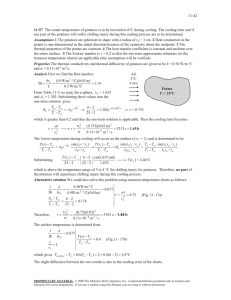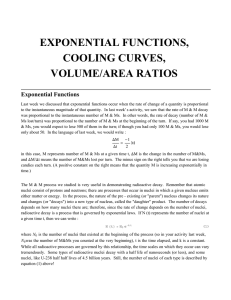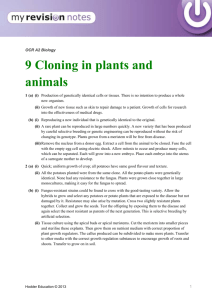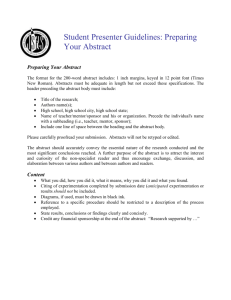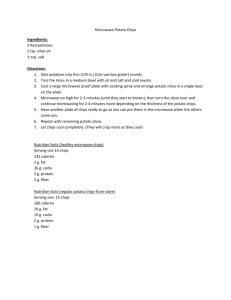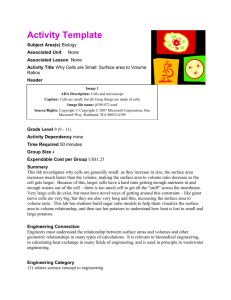Cooling Curve Lab
advertisement
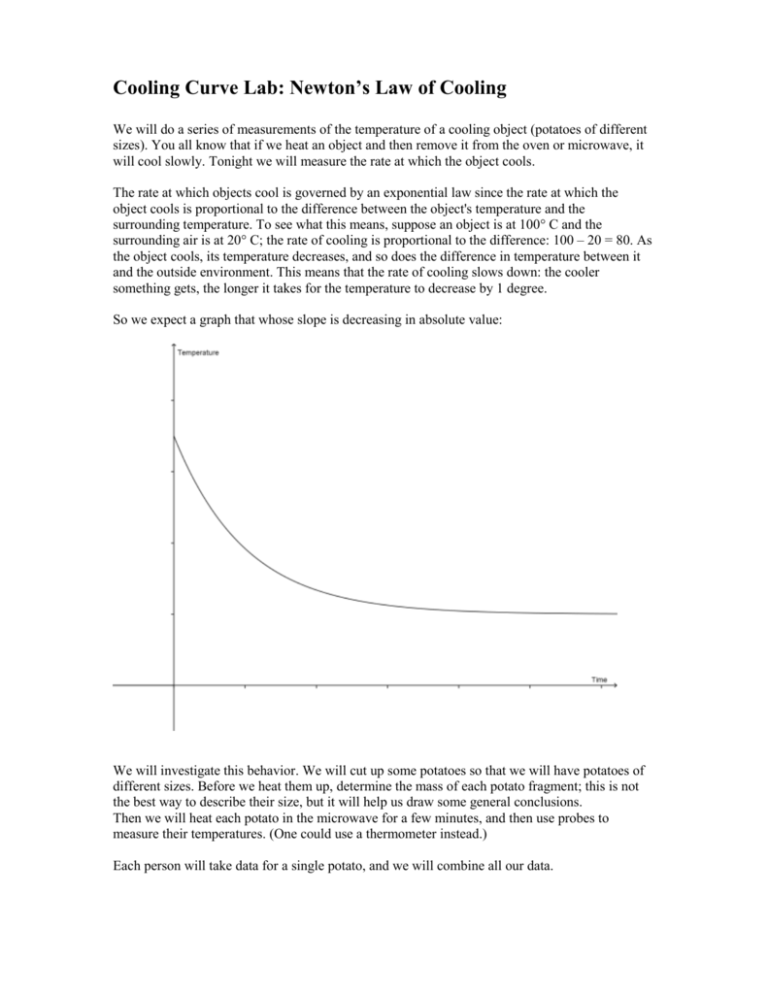
Cooling Curve Lab: Newton’s Law of Cooling We will do a series of measurements of the temperature of a cooling object (potatoes of different sizes). You all know that if we heat an object and then remove it from the oven or microwave, it will cool slowly. Tonight we will measure the rate at which the object cools. The rate at which objects cool is governed by an exponential law since the rate at which the object cools is proportional to the difference between the object's temperature and the surrounding temperature. To see what this means, suppose an object is at 100° C and the surrounding air is at 20° C; the rate of cooling is proportional to the difference: 100 – 20 = 80. As the object cools, its temperature decreases, and so does the difference in temperature between it and the outside environment. This means that the rate of cooling slows down: the cooler something gets, the longer it takes for the temperature to decrease by 1 degree. So we expect a graph that whose slope is decreasing in absolute value: We will investigate this behavior. We will cut up some potatoes so that we will have potatoes of different sizes. Before we heat them up, determine the mass of each potato fragment; this is not the best way to describe their size, but it will help us draw some general conclusions. Then we will heat each potato in the microwave for a few minutes, and then use probes to measure their temperatures. (One could use a thermometer instead.) Each person will take data for a single potato, and we will combine all our data. For each potato, measure the temperature of the potato at minute intervals, being careful to record the temperature when t = 0. Each person in the group should have one complete set of data for each potato. We will share the data among everyone (which should include the mass of the potato). Plot the data for all the potatoes. Answer the following questions: 1) Do all the curves appear to be converging to the same temperature? What is your reasoning for your conclusion? 2) If the answer to question 1 is yes, estimate the value of this temperature. What do you think the physical meaning of this temperature is? 3) For each potato, determine how long it took for the potato's temperature to decrease from its initial temperature by 10%; how long did it take to decrease the next 10%; the next 10% (for each potato, you should have 5 to 7 decrements of 10%)? What if any conclusions can you draw about the time it takes for the temp to decrease by 10% (does that time stay constant, increase, decrease or show no identifiable pattern of change). 4. Now, compare the "10% cooling times" for each potato. Is there any relationship between the mass and 10% cooling time? 5. Subtract the ambient temperature from the temperature readings and fit an exponential model to the data in your calculator. How well does the data fit?


